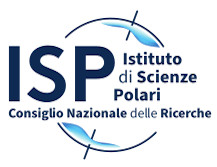English_content
The Institute Advisory Board (Art. 13, Regolamento Organizzazione e Funzionamento CNR del 2019) consists of the Director, who presides over it, six elected representatives of the researchers and technologists of the Institute and one technical-administrative staff representative.
Previous Advisory Board
The ISP Advisory Board members are:
.
.
.
.
.
.
.
.
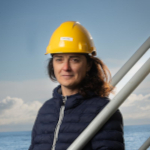
Giuliana Panieri
M.Sclavo (until 2024/31/01)
C.Barbante (until 2024/30/04)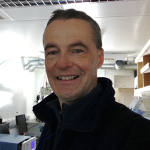
Warren Raymond Lee Cairns
(Representative of the
Researchers and Technologists)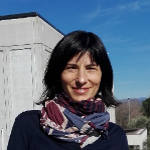
Pamela Cialli
(Representative of the
Technical-Administrative staff) 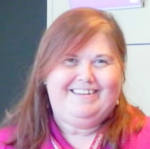
Fabiana Corami
(Representative of the
Researchers and Technologists)
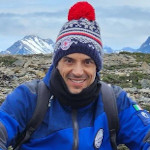
Francesco Filiciotto
(Representative of the
Researchers and Technologists) 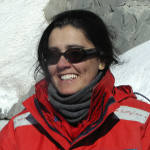
Angelina Lo Giudice
(Representative of the
Researchers and Technologists)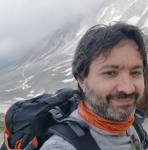
Angelo Lupi
(Representative of the
Researchers and Technologists)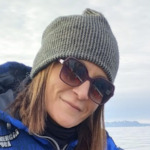
Francesca Spataro
(Representative of the
Researchers and Technologists)
December 21, 2019 - December 19, 2023
Director: Carlo Barbante
Representatives of the researchers and technologists: Maurizio Azzaro, Fabiana Corami, Federico Giglio, Elena Gregoris, Mauro Mazzola, Rosamaria Salvatori
Representative technical-administrative staff: Alessandro Cosenza
The CNR is present in various international coordination and scientific planning organizations in the Arctic and Antarctica. These include the International Arctic Science Committee (IASC), the European Polar Board (EPB), the Forum of Arctic Research Operators (FARO), the Ny-Ålesund Scientific Managers Committee (NySMAC) and the Sustaining Arctic Observing Networks (SAON).
Furthermore, thanks to signed treaties or political agreements, the CNR actively supports the presence of our country, with its experts, in scientific organizations, committees and working groups. CNR researchers participate to the Working and Expert Groups of the Arctic Council (AC). With regards to Antarctica, the CNR takes an active part in the various permanent committees of the Scientific Committee on Antarctic Research (SCAR).
ISP is strongly committed to guaranteeing the participation of the CNR in the SIOS (Svalbard Integrated Arctic Earth Observing System) initiative whose purpose is to integrate, optimize and coordinate resources and research in the Svalbard archipelago at an international level.
In this context, the Institute of Polar Sciences (ISP) supports the CNR’s representation on international bodies with the presence of:
| Acronym | Organisation | Name | Role |
|---|---|---|---|
| Arctic Council - Arctic Contaminants Action Programme
POPs and Mercury Working group |
Warren Cairns | Component | |
| Arctic Council - Expert Group on Black Carbon and Methane | Stefania Gilardoni | Component | |
| Arctic Council - Arctic Monitoring & Assessment Programme | Nicoletta Ademollo, Vito Vitale | Components | |
| Arctic Council - Arctic Monitoring & Assessment Programme
Mercury Working group and POPs Working group |
Warren Cairns | Component | |
| Association of Polar Early Career Scientists National Committees |
Andrea Spolaor | Component | |
| Arctic Research Icebreaker Consortium | Leonardo Langone | CNR reprensentative | |
| Marine Invasive Alien Species in Arctic Waters | Maurizio Azzaro | National Delegate | |
| European Polar Board | Vito Vitale | CNR reprensentative | |
| Forum of Arctic Research Operators | Mauro Mazzola | National reprensentative | |
| An International Study of the Marine Biogeochemical Cycles of Trace Elements and Isotopes | Paolo Montagna | National Delegate | |
| International Arctic Science Committee | Carlo Barbante | National Delegate | |
| International Arctic Science Committee
Cryosphere Working Group |
Andrea Spolaor | Component | |
| International Arctic Science Committee
Marine Working Group |
Tommaso Tesi | Component | |
| International Permafrost Association | Renato R. Colucci | National Delegate | |
| Ny-Ålesund Science Managers Committee | Mauro Mazzola, Andrea Spolaor, ad interim | National representatives | |
| Sustaining Arctic Observing Networks | Vito Vitale | Component | |
| Synoptic Arctic Survey Scientific Steering Committee | Maurizio Azzaro | Component | |
| Scientific Committee on Antarctic Research
Input Pathways of Persistent Organic Pollutants to Antarctica |
Nicoletta Ademollo | Component | |
| Svalbard Integrated Arctic Earth Observing System
Board of Director |
Vito Vitale | Component | |
| Svalbard Integrated Arctic Earth Observing System
Research Infrastructure Coordination Committee |
Mauro Mazzola, Stefania Gilardoni | Components | |
| Svalbard Integrated Arctic Earth Observing System
SIOS Data Management System Working Group |
Giulio Verazzo | Component | |
| United Nations, Division for Ocean Affairs and the Law of the Sea,
World Ocean Assessment III |
Maurizio Azzaro | Expert |
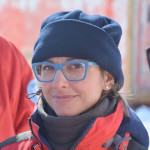 She received her Master of Science in Biology, her PhD in Environmental Sciences: Marine Environment and Resources, and specialization and continuing education courses in Applied Microbiology.
She received her Master of Science in Biology, her PhD in Environmental Sciences: Marine Environment and Resources, and specialization and continuing education courses in Applied Microbiology.
She has been a researcher at CNR since 2011, specializing in marine molecular microbiology and biotechnology. Her research activities are mainly focused on the deep sea environment and marine and terrestrial extreme ecosystems in both temperate and polar climates. Her main interests have been focused in studying microbial communities inhabiting extreme environments, their role in functioning of extreme ecosystems, as well as in isolating of new microbial taxa, genes, novel bioproducts and biomolecules for biotechnological applications. She is author/co-author of over 70 international peer-reviewed publications. She has participated in fourteen scientific oceanographic expeditions in the Eastern Mediterranean (several as Chief Scientist) and in two scientific expedition to Antarctica. She has coordinated of and participated in several national research programs (FIRB, PNRA) and international programs (EC, Horizon 2020 and ESF programs).
RESEARCHER ID S-9890-2017 Scopus - Author ID: 6507507411 ![]() https://orcid.org/0000-0002-3306-4938 Research Gate: Violetta La Cono
https://orcid.org/0000-0002-3306-4938 Research Gate: Violetta La Cono
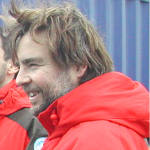 Laurea cum Laude in Biology (1990), at the II University of Rome. From 2001 to 2019, he was recruited as permanent position scientist at the Institute of Marine Sciences in Ancona.
Laurea cum Laude in Biology (1990), at the II University of Rome. From 2001 to 2019, he was recruited as permanent position scientist at the Institute of Marine Sciences in Ancona.
Currently, he works at the Institute of Polar Sciences of CNR in Bologna. His fields of interest include age determination through otolith analysis, reproductive biology and feeding habits of fishes from both Mediterranean and Antarctic waters. He participated to several research projects funded by EC, MIUR and PNRA.
He was involved for a long time with foreign scientists on Antarctic topics and participated to several international scientific cruises in the Southern Ocean (mainly Germany and USA). Currently, he is author/co-author of about 100 papers published on peer-reviewed journals (JCR).
Scopus - Author ID: 6701474004 ![]() http://orcid.org/0000-0002-3716-0054 Research Gate Google Scholar
http://orcid.org/0000-0002-3716-0054 Research Gate Google Scholar
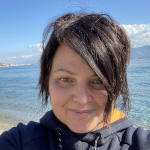 She has a degree in Biological Sciences (University of Messina) and a doctorate in Marine Science and Engineering (University Federico II of Naples). She is currently a CNR Researcher at the Institute of Polar Sciences (CNR-ISP), Messina, and was previously a research fellow at the Institute of Coastal Marine Environment (IAMC-Messina).
She has a degree in Biological Sciences (University of Messina) and a doctorate in Marine Science and Engineering (University Federico II of Naples). She is currently a CNR Researcher at the Institute of Polar Sciences (CNR-ISP), Messina, and was previously a research fellow at the Institute of Coastal Marine Environment (IAMC-Messina).
Her research activity is focused on the study of microbial communities present in deep and/or extreme marine environments, such as Deep Hypersaline Anoxic Basins (DHAB), Hydrothermal vents, as well as in polar environments, with particular interest in biodiversity, mapping of genes of biotechnological interest and bioinformatics analysis. She spent a period of training at the Oklahoma University (USA), at the Institute of Environmental Genomics. She has participated in ten oceanographic expeditions in the Mediterranean Sea aboard R/V Urania. She is co-author of publications in scientific journals. She has collaborated in national and international research projects (KILL SPILL- ULIXES- INMARE- RITMARE- DEEP_C - PON S.A.B.I.E. - COMMODE - MICROB3 - MAMBA - MIDDLE) and has been head of units (IAMC) for the Simply (Structures and IMmunologic Properties of LipopolYsaccharides from Antarctic psychrophilic bacteria) project.
![]() https://orcid.org/0000-0003-4768-182X Scopus - Author ID: 35620623600 Scholar
https://orcid.org/0000-0003-4768-182X Scopus - Author ID: 35620623600 Scholar
Research activities are not only based on the observatories, there is a network of laboratories, located at the various branches of the Institute, which allow researchers to develop ISP research topics. In the laboratories, samples taken in polar areas are analysed. These samples, given the difficult environmental conditions in which we operate during the field campaigns, as well as the considerable logistical effort involved in their collection, are always precious and often unrepeatable. Therefore, the availability of equipment that allows the researcher to obtain the maximum possible information from each sample becomes fundamental so we can advance knowledge of these extreme environments.
The laboratories also perform services on behalf of third parties and in the context of contracts, agreements and research collaborations with companies, universities and national and international institutions. For more information, contact the representatives of the laboratories / instruments.
Brief description
The experimental activities carried out at the MicroChem Lab in Rome focus on the analytical determination of legacy and emerging organic micropollutants and their metabolites, in order to understand their diffusion, distribution, persistence dynamics and fate in the environment. The studies performed at the MicroChem Lab aim also to study the relationships between the climate change and the spread of contaminants at global and local scale. For these purposes, the development and optimization of highly specific and sensitive analytical methodologies for the detection of chemicals at trace and sub-trace concentration levels in the environmental matrices, is required.
Environmental compartments
The experimental activities focus on aquatic and terrestrial ecosystems, therefore the environmental matrices of interest are: Surface waters and sediments (seas, rivers, lakes), snow/ice, soils, aquatic and terrestrial vegetation, biota.
Analytical techniques
The analytical determination of the organic micropollutants is performed by the combination of:
- Pre-treatment methods (e.g. freeze-drying, filtration, etc.);
- Extraction/Clean up methods (solid-phase extraction-SPE, pressurized liquid extraction-PLE, liquid-liquid extraction-LL);
- Sensitive and selective analytical methods based on the coupling of chromatographic techniques (HPLC or GC) with fluorescence, FID-ECD and mass spectrometry detection.
Equipment
The MicroChem Lab is equipped with the following analytical tools:
Benchtop lyophilizer (freeze-dryer LABCONCO) 2.5 L capacity, equipped with a touchscreen display, for the pre-treatment of solid matrices subsequently extracted with PLE.
Solid Phase Extraction (SPE): 12 inlets solid phase extractor connected to cartridges packed with specific adsorbents for the extraction of target compounds from liquid matrices through a vacuum system.
Sonicator (Branson, mod. 2510) for the extraction of chemical compounds from solid matrices by using suitable solvents.
ASE 150 (Dionex, Thermo Scientific) to perform pressurized liquid extraction (PLE) of organic pollutants from solid matrices.
Speed Extractor E-916 (Buchi) to perform simultaneous pressurized liquid extraction (PLE) of 6 samples, operating in different modes.
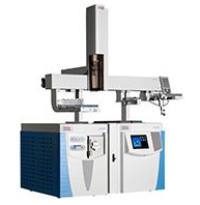 Rotavapor R 100 (Buchi), equipped with an electronic interface to control the vacuum system and the recirculating chiller.
Rotavapor R 100 (Buchi), equipped with an electronic interface to control the vacuum system and the recirculating chiller.
Gas chromatograph (Thermo Fisher, Trace 3000) coupled to mass spectrometry (MS) detector (Thermo Fisher, ISQ7000). The device is connected to an autosampler (Thermo Fisher. AI 1310) and is controlled by a Chromeleon software.
HPLC (quaternary pump, column Oven mod. LC-100 and Micro Pump Series 200, Perkin Elmer, USA) coupled to a fluorescence detector (Perkin Elmer Series 200a). The device is controlled by a Chromeleon Software.
HPLC (binary pump, Vanquish TM Core HPLC system, Thermo Scientific TM, Italy) coupled to a high-resolution mass spectrometer (Orbitrap Exploris 120, Thermo Scientific TM, Italy). The device is controlled by XcaliburSoftware (version 5.1).
Contact person: Dr.Luisa Patrolecco – luisa.patrolecco AT cnr.it
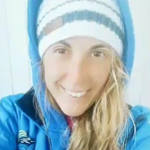 Marine biologist and oceanographer, Serena got three degrees from different universities: the undergraduate in Biological Sciences at the University of Genova, the master in marine biology at the University Politecnica delle Marche in Ancona, another master in 'Applied Physical Oceanography' at the University of Malta. She studied in detail the algae reproduction as well as the anchovies reproduction, while her specialisation as a marine biologist was about the study of the Sperm whales' acoustic. She wanted to protect the oceans and who lives in them, therefore in Malta she specialised into the study of the plastic pollution, with the use of a drone, deriving from an oceanic input as well as from humans, as a definition of a non education about the environment. Furthermore, her desire to know more in detail about other cetaceans species brought her for different summer seasons to Husavik, Iceland, working as a whale watching guide. From the humpback whales and the blue whales to the curiosity of knowing more about the ice, while looking at the glaciers in Iceland. Since then, she became a PhD student at the University of Ca' Foscari of Venice, in collaboration with the University of Milan-Bicocca, where she is studying the RICE ice core, in particular the fossils that she is finding into the core and the reason why they are there.
Marine biologist and oceanographer, Serena got three degrees from different universities: the undergraduate in Biological Sciences at the University of Genova, the master in marine biology at the University Politecnica delle Marche in Ancona, another master in 'Applied Physical Oceanography' at the University of Malta. She studied in detail the algae reproduction as well as the anchovies reproduction, while her specialisation as a marine biologist was about the study of the Sperm whales' acoustic. She wanted to protect the oceans and who lives in them, therefore in Malta she specialised into the study of the plastic pollution, with the use of a drone, deriving from an oceanic input as well as from humans, as a definition of a non education about the environment. Furthermore, her desire to know more in detail about other cetaceans species brought her for different summer seasons to Husavik, Iceland, working as a whale watching guide. From the humpback whales and the blue whales to the curiosity of knowing more about the ice, while looking at the glaciers in Iceland. Since then, she became a PhD student at the University of Ca' Foscari of Venice, in collaboration with the University of Milan-Bicocca, where she is studying the RICE ice core, in particular the fossils that she is finding into the core and the reason why they are there.
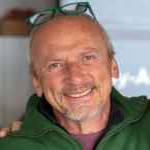 He is interested in determining rates of aquatic processes involving sediment particles, using radioactive tracers and time-series sediment traps. Particle dynamics is then applied to the study of the effects of climate change on the marine and polar environment, such as: a) biogeochemical cycles of organic C and biogenic silica in the Southern Ocean, Fram Strait and Mediterranean Sea; b) Late Quaternary paleoceanographic reconstructions using biogenic and radionuclide components; c) estimates of atmospheric CO2 growth rate in remote and polar ocean; c) particle transport by dense water cascading down to the deep marine realm; e) historical reconstruction of the sediment pollution of lacustrine and coastal environments in highly populated and remote polar areas.
He is interested in determining rates of aquatic processes involving sediment particles, using radioactive tracers and time-series sediment traps. Particle dynamics is then applied to the study of the effects of climate change on the marine and polar environment, such as: a) biogeochemical cycles of organic C and biogenic silica in the Southern Ocean, Fram Strait and Mediterranean Sea; b) Late Quaternary paleoceanographic reconstructions using biogenic and radionuclide components; c) estimates of atmospheric CO2 growth rate in remote and polar ocean; c) particle transport by dense water cascading down to the deep marine realm; e) historical reconstruction of the sediment pollution of lacustrine and coastal environments in highly populated and remote polar areas.
Participation at EC and national projects. PI of projects funded by industry and ONR. PI or WP leader in Antarctica and Arctic projects. CNR scientific contact in EU-ARICE and EU-INTERACT III. Experience >30 years of oceanographic campaigns with 90 participations (18 as Chief Scientist) in the Mediterranean, Atlantic, Southern Ocean and Arctic ocean. Scientific coordinator of marine activities during 2 Italian expeditions in Antarctica. He is the pro-tempore Director of the Institute of Polar Sciences of the Italian CNR (CNR-ISP).
He is author or co-author of ca. 100 scientific papers published on ISI journals with Impact Factor, ca. 60 scientific papers published on no-ISI journals, 7 chapters of book, 30 technical reports and cruise reports. Citation number amounts to about 2500, with a Hirsch factor (h-factor) of 27 (font Scopus).
Scopus - Author ID: 6603776561 Research Gate Google Scholar
 She got her Ph.D. in Environmental Sciences at the University of Messina in 2006. Actually, she is member of the Committee for the Collection and Management of Antarctic samples of the PNRA-MIUR, and of the Executive Committee of the CUR for the study of Extreme Environments and Extremophiles Francesco Maria Faranda (University of Messina).
She got her Ph.D. in Environmental Sciences at the University of Messina in 2006. Actually, she is member of the Committee for the Collection and Management of Antarctic samples of the PNRA-MIUR, and of the Executive Committee of the CUR for the study of Extreme Environments and Extremophiles Francesco Maria Faranda (University of Messina).
She collaborated with the University of Messina for the scientific management of the Italian Collection of Antarctic Bacteria of the National Antarctic Museum (CIBAN-MNA).
She participated to sampling campaigns in Antarctic and Arctic areas, as well as to oceanographic cruises in the Mediterranean. She is actively involved in national and international research projects in the fields of microbial ecology (diversity and function of prokaryotes) of polar environments, biotechnology of cold-adapted bacteria (e.g.,. search for xenobiotic degraders and biomolecule producers) and bacterial interactions. She is particularly interested in the bacterial association with benthic filter-feeders, and in the relationships between prokaryotes and chemical contamination.
She is author or co-author of more than 70 papers in international peer-reviewed journals, among which Physics of Life Reviews, Scientific Reports, Biotechnology Advances, Science of the Total Environment, Soil Biology and Biochemistry, PLOS One, Applied and Environmental Microbiology, Microbial Ecology, and several book chapters. She is peer-reviewer for international journals on ecology and microbiology, and scientific reviewer for project proposals for international polar agencies. She is member of the open-access journals Microorganisms (Section Microbial Biotechnology) and Diversity (Section Microbial Diversity), and Review Editor for “Frontiers in Marine Sciences: Marine Biotechnology”.
Scopus - Author ID: 57202031230 ![]() http://orcid.org/0000-0002-8842-083X Research Gate: Angelina Lo Giudice
http://orcid.org/0000-0002-8842-083X Research Gate: Angelina Lo Giudice
More...
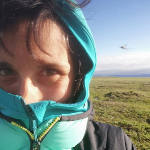 She attained the master’s degree with honours in Applied and Environmental Geology at the University of Turin in 2010, with a thesis entitled Distribution, origin and consequences of fluoride content in groundwater in an area of the central sector of the Ethiopian Rift. She specialized in the collection, analysis and dissemination of data in developing countries and in geological and hydrogeological mapping and modelling through GIS data management. The working experience in the Alpine environment allowed the deepening into pedological and geochemical subjects. She worked as study grant holder on the Nunataryuk EU-funded Horizon 2020 project, coordinated by the Alfred Wegener Institute, that aims to assess arctic permafrost thaw and study how it contributes to climate change.
She attained the master’s degree with honours in Applied and Environmental Geology at the University of Turin in 2010, with a thesis entitled Distribution, origin and consequences of fluoride content in groundwater in an area of the central sector of the Ethiopian Rift. She specialized in the collection, analysis and dissemination of data in developing countries and in geological and hydrogeological mapping and modelling through GIS data management. The working experience in the Alpine environment allowed the deepening into pedological and geochemical subjects. She worked as study grant holder on the Nunataryuk EU-funded Horizon 2020 project, coordinated by the Alfred Wegener Institute, that aims to assess arctic permafrost thaw and study how it contributes to climate change.
Present position: PhD Student at University Ca' Foscari Venezia, PhD in Polar Sciences; title of proposal: Modelling the fate of POPs distribution in permafrost: combine large scale to local perspective.
 His main activities are focused in the study of the optical properties of the atmosphere, the interactions between ultraviolet radiation, visible and infrared with atmospheric constituents; his research interests have turned to the impact that aerosols, trace gases and clouds exert on the radiation balance of the Earth-atmosphere system, focusing in particular on the assessment of the direct radiative effects produced by the aerosol, on the assessment of the radiation balance in the polar areas and the role that gas trace, aerosols and clouds in these regions have particularly sensitive.
His main activities are focused in the study of the optical properties of the atmosphere, the interactions between ultraviolet radiation, visible and infrared with atmospheric constituents; his research interests have turned to the impact that aerosols, trace gases and clouds exert on the radiation balance of the Earth-atmosphere system, focusing in particular on the assessment of the direct radiative effects produced by the aerosol, on the assessment of the radiation balance in the polar areas and the role that gas trace, aerosols and clouds in these regions have particularly sensitive.
The scientific activity has been divided among the experimental research (mainly solar photometry, measurements of downwelling and upwelling radiative fluxes in the visible and near-and far-infrared, aerosol optical and physical properties), and modelling using radiative transport codes for the evaluation of the radiative fluxes in the atmosphere. Over the past years he has participated at multiple Antarctic polar campaigns, gaining experience in instrumentation and data analysis. He is co-author of more than 50 articles in international journals.
Scopus - Author ID: 7005284903 ![]() http://orcid.org/0000-0002-5009-9876
http://orcid.org/0000-0002-5009-9876
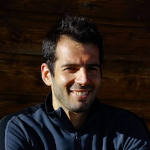 He received his master degree in nuclear and particle physics from Milano-Bicocca University in 2014. His background ranges from applied particle physics to environmental radioactivity and high-energy physics. His work at the nuclear fission reactor in Pavia (Italy) introduced him to the ice core science field. He did his PhD (2014-2017) at the Niels Bohr Institute (Copenhagen, Denmark), working on ice core continuous flow analysis systems and past sea ice reconstructions. He continued his research on climate reconstructions at the Niels Bohr Institute, at the Italian National Research Council and at the University of Venice in 2018 and 2019. Between 2020 and 2022 he was Marie Curie fellow at the University of Venice with a project on computer vision and Artificial Intelligence techniques applied to ice core analyses. Since September 2022 he works on glacier modeling via deep neural networks in collaboration with the University of California, Irvine. He is particularly interested in exploring AI and Machine Learning approaches to Earth System Science problems.
He received his master degree in nuclear and particle physics from Milano-Bicocca University in 2014. His background ranges from applied particle physics to environmental radioactivity and high-energy physics. His work at the nuclear fission reactor in Pavia (Italy) introduced him to the ice core science field. He did his PhD (2014-2017) at the Niels Bohr Institute (Copenhagen, Denmark), working on ice core continuous flow analysis systems and past sea ice reconstructions. He continued his research on climate reconstructions at the Niels Bohr Institute, at the Italian National Research Council and at the University of Venice in 2018 and 2019. Between 2020 and 2022 he was Marie Curie fellow at the University of Venice with a project on computer vision and Artificial Intelligence techniques applied to ice core analyses. Since September 2022 he works on glacier modeling via deep neural networks in collaboration with the University of California, Irvine. He is particularly interested in exploring AI and Machine Learning approaches to Earth System Science problems.
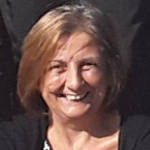 She is currently CTER - IV level at the Institute of Polar Sciences in Messina.
She is currently CTER - IV level at the Institute of Polar Sciences in Messina.
She has participated to numerous oceanographic cruises in the Mediterranean Sea with particular regard to the collection, treatment and analysis of samples. She actively participates at national and international research projects on polar issues.
Her research activities are mainly devoted to the study of the ecology of bacterial populations in aquatic samples (seawater and brines) and permafrost. In particular: to the study of the biomass of prokaryotes by counting and morphometric and morphological analyses, through the application of microscopic techniques in epifluoresence and image analysis; the estimation of physiological profiles at community level of prokaryotes through BIOLOG Ecoplate; the quantification of viable cells through the use of biomarkers (LIVE/DEAD and CTC). She also performs graphic and statistical processing of experimental data and collaborates in the drafting of scientific papers.
Scopus - Author ID: 7801432695
 Ministero dell'Universita e Ricerca
Ministero dell'Universita e Ricerca
Programma Ricerche Artico
Programma Nazionale di Ricerca in Antartide
 Ministero degli Affari Esteri e della Cooperazione Internazionale
Ministero degli Affari Esteri e della Cooperazione Internazionale
L'Italia e l’Artico
L’Italia e l’Antartide
CNR-ISP
National Research Council
Institute of Polar Sciences
c/o Scientific Campus - Ca' Foscari University Venice - Via Torino, 155 - 30172 VENEZIA MESTRE (VE)
Phone: +39 041 2348547 - E-mail: protocollo.isp AT pec.cnr.it
Fax: +39 041 2348 549 - Codice Fiscale: 80054330586 - P.I.:02118311006
Unless otherwise indicated, the content of this site is licensed : Attribution Non Commercial Share Alike 4.0 International (CC BY-NC-SA 4.0)
Privacy policy e Cookie policy - Transparent administration (CNR)
